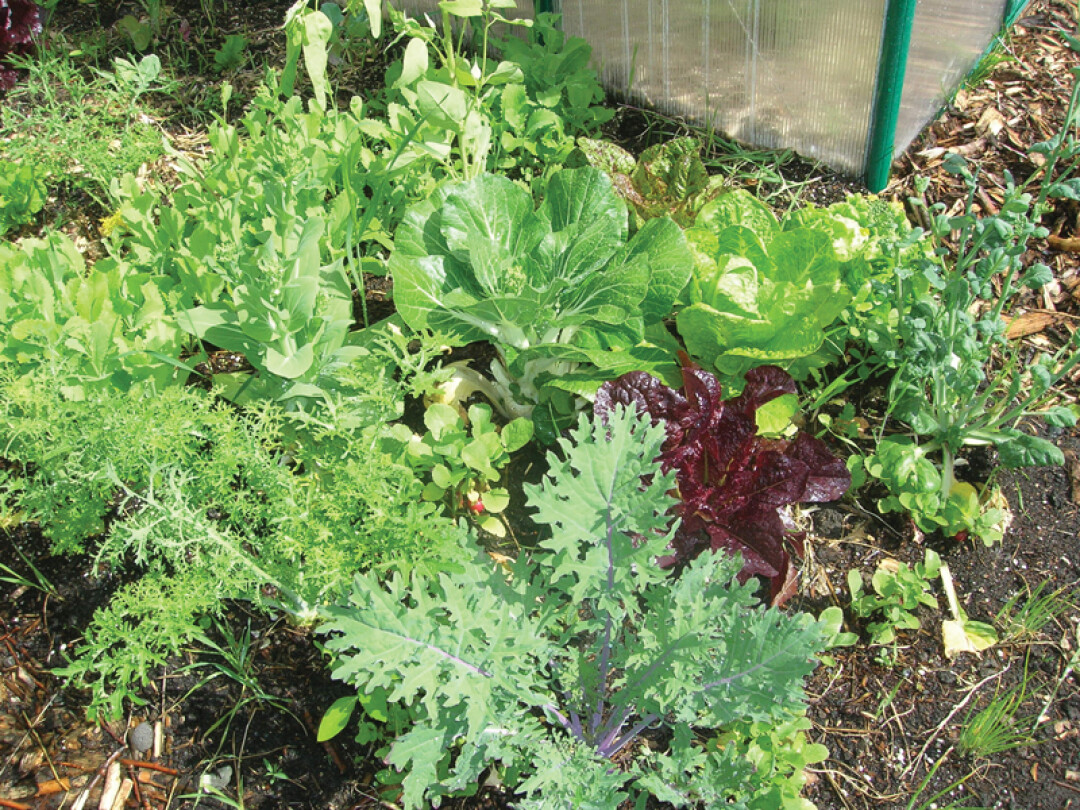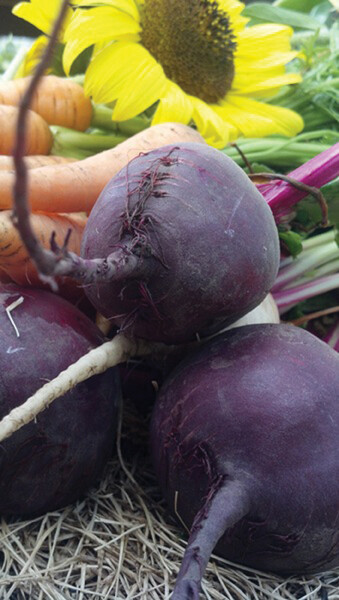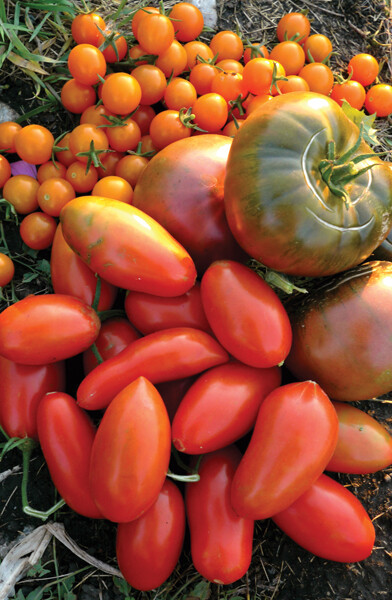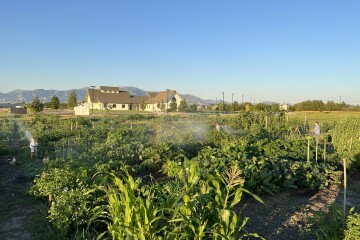Advice & Inspiration for the Beginning Gardener
You’ve perused a few books over the winter, talked to some other gardeners, and perhaps even gotten some seed catalogs in the mail. You’ve tentatively looked at your backyard to figure out a sunny spot to put a garden and now, as March rolls around and the promise of spring is just around the corner, it’s almost time to jump in.

As someone trying to inspire and teach more people to grow their own food in the Gallatin Valley, I know my task is two-fold when it comes to getting people started – a small sprinkling of knowledge on how to garden coupled with a larger dose of encouragement to just dive in.
Because it’s more straightforward, I’ll start with the how-to piece of gardening, encapsulated in my Five Tips – Sun, Soil, Seeds, Start Small and Stay Close.
SUN - Choose a south-facing spot in your yard that gets at least six to eight hours of sun per day. Fruiting vegetables such as tomatoes and peppers need a minimum of eight hours, rooting vegetables (e.g. carrots, beets) a minimum of six. Leafy vegetables such as lettuce, spinach and kale can be planted in more shaded areas of your yard as they only need a minimum of four hours of sunlight. Identify your garden spot according to sun and shade patterns in your yard, keeping in mind that they change over the seasons. In addition, observe what microclimates exist in your yard; do you have rock walls that can help absorb heat or reflective walls that will make an area warmer and more protected from the wind?
SOIL - Your soil is the foundation of your garden. A healthy soil is a living soil full of microorganisms that protect your plants from disease. Plant to improve your soil year after year. Growing vegetables draws a significant amount of nutrients out of the soil so you will need to replace those nutrients by inputs of compost and manure every spring or fall. Supplement your fertility by planting nitrogen-fixing (e.g. peas, legumes, clover) and nutrient-accumulating plants (e.g. comfrey, borage, lupine) in your garden. Do not use synthetic fertilizers, herbicides or pesticides. These products will destroy the living microorganisms in your soil. Also, keep your garden well mulched during the summer with straw or leaves. Mulching between your plants will maintain more consistent soil moisture and cut down on how often you water.
SEEDS - Grow what you and your family will eat and what can mature during our 90 -100 day growing season. Our family loves fresh, vine-ripened tomatoes so these figure prominently in our garden. I also consider that a pound of potatoes or onions from my local farmer is a lot less expensive then a pound of tomatoes. So, if I am limited on space, I’ll dedicate more garden space to tomatoes. Also consider if you want your garden to supply just summer food or winter storage crops. Or, what veggies do you buy every week or what herbs do you use most often in your cooking?
If you have space for fruit trees or berry bushes, design them into your garden space. As perennials, these will give you a good yield without all the fuss of seeding and planting every year.
In addition, attracting pollinators to your garden is integral to a healthy and productive growing space. Create microhabitats for birds and bees with shrubs, hedges, and perennial beds. Provide a water source (e.g. bird bath) and include plants such as bee balm, purple coneflower, Shasta daisy, borage and yarrow.
Finally, when you go to buy these seeds, seedlings, or plants, tap into local sources and look for locally produced seeds and plants as much as possible.
START SMALL - If you are new to gardening, it is always good to start with a small garden. This will give you a sense of the time and energy involved in maintaining it. A lot of food can be grown in a small space if you put some time into soil building and path design. Remember, aim for small successes rather than large failures! You can always expand as your experience and appetite for garden fresh food grows.
STAY CLOSE - Make watering easy and site your garden, if you can, close to your spigot and to your house. The proximity of the garden to your house will ensure that you maintain it. We maintain and care for what we see every day. Alternatively, think about installing an automatic irrigation system if your lifestyle doesn’t lend itself to getting in the garden every couple days.
Following these five tips will go a long way towards having a productive and successful garden this spring. However, for those of you who still feel somewhat tentative about starting a garden, here is that dose of encouragement and advice that I promised:
• Make time. Intentionally carve out space in your life for gardening. Gardening takes commitment and dedication. I am not going to be the person that tells you that vegetable gardening can be done in 15 minutes/week. Nor am I saying that it is going to take you two hours/day. Instead, I’m going to ask you to shift something in your life to allow yourself the time to garden. If you don’t plan for it, it will likely not happen.
• Don’t be afraid to fail. Every year, I have a series of mini failures. It’s true what they say, you learn far more from your mistakes than your successes. The same holds true in your garden. Whether it’s limited germination of carrots, winter squash devoured by voles, or limited fruiting because of lack of fertility, I have finally learned to take these failures in stride, note them for next year, and look forward to trying again.
• Celebrate your successes. At every step throughout the growing season, recognize what you’ve accomplished. We are so quick to point out what is going wrong in our gardens (and in our lives) rather than being grateful for what is working. I may not have had a good carrot crop this past season but I had a great tomato harvest. It meant that I traded some of my tomatoes for a friend of mine’s carrots. Problem solved, connection made, and delicious vegetables shared.
• Be patient. Give yourself at least three seasons (or more!) to feel like you know what you are doing. We have a challenging growing climate. If it’s not the short growing season then it’s the hail, or the late frost, or the poor soil, or the cool nighttime temperatures. Allowing yourself only one year to ‘figure it all out’ is not realistic. As gardeners, we are limited by the seasons. That is the beauty and the challenge of gardening.
Every growing season, when trying new seed varieties or new techniques, I am once again thrust back into the beginner’s mindset. Unlike my first few growing seasons, however, I know better than to let that feeling of trying something new stand in the way of me just going for it. Those feelings of uncertainty, unfamiliarity, or self-doubt have been muted by my years of experience that have convinced me of a couple truths:
First, seeds want to sprout, plants want to grow, and life wants to prevail despite our belief that we will perpetually fail, and second, we will fail, and that’s completely normal.
Your garden will be your best teacher in so many ways. It will teach you how to grow food and be more self-reliant. It will give you an understanding of the transformation that occurs when you take a relationship to your land and the connection that is made when you grow and eat what you’ve produced. It will teach you intangible lessons like patience, the importance of observing, the inevitability of failure, and the sweet, meaningful, and nourishing taste of success.
